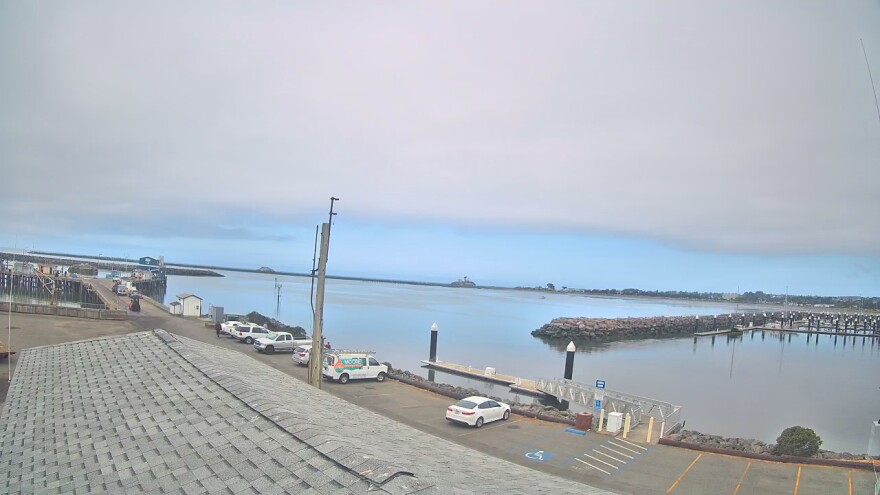A rare 8.8 magnitude earthquake off the coast of eastern Russia prompted tsunami warnings and evacuations along the West Coast Tuesday night.
But luckily, the greatest of those waves, which arrived overnight, appeared to have caused little to no damage along the Southern Oregon and Northern California coasts.
Coos Bay Fire Department Fire Chief Jeff Adkins said the city saw no damage, and that the waters were consistently under 2 feet at low tide. He said residents were less panicked than they were during the Dec. 5, 2024, tsunami warning because schools weren’t in session and the waves didn’t come in until night.
Port of Port Orford Administrator Catherine Scobby said there wasn’t damage caused by the fluctuating tides. Port Orford’s waters saw major spikes through the night — with the tide reaching as high as 7 ½ feet — before calming in the morning.
Crescent City, near the Oregon/California border, experienced some of the greatest wave fluctuations. Tsunamis often hit Crescent City harder than other places, because of an underwater ridge called the Mendocino Fracture Zone which funnels the waves into deeper water, allowing them to pick up speed before heading to shore. The shape of the city’s harbor can also trap waves inside, amplifying the effects.
Officials say that 16 people evacuated to a temporary center and stayed overnight on Tuesday.
Crescent City Harbormaster Mike Rademaker said after a 2011 tsunami caused millions in damage to the docks, the city rebuilt the docks to be tsunami-resistant.
“Notably, H dock was engineered as a wave and current attenuator with closely spaced pilings, which are specifically designed to disrupt and dissipate tsunami energy before it reaches the Inner Harbor,” he said during a morning update on Wednesday. “So its sacrificial role in the overall design appears to have functioned as intended, absorbing the brunt of the surge, helping to protect the more interior docks.”
Rademaker said that the H dock was submerged and broke apart, causing electric sparking. But they haven’t noticed any loose or damaged boats. The estimated cost of repairs to the dock are $100,000. Vessels have been prohibited from leaving or entering the harbor as of Wednesday morning because of the dangerous conditions.
These wave fluctuations remain persistent in Crescent City, but trending downward according to the National Weather Service.
“There's still going to be a lot of strong currents through the day,” said Weather Service Meteorologist Matthew Kidwell. “I would expect through a lot of the day, you'll need to be especially cautious of the ocean and even possibly into tonight. And even once the advisory drops, there could be some minor currents continuing.”
Officials are warning people to stay away from the beach until around Thursday afternoon, because conditions can change dramatically. In Crescent City, there have been up to 6 foot differences between high and low tides, happening every 10 minutes.
Residual waves after a tsunami were what claimed the life of Dustin Weber in 2011, who went hiking after believing that the subsequent waves would be small, according to CBS News. Four others were rescued after being swept out to sea.
A tsunami advisory remains in effect along the coast of Del Norte, San Luis Obispo and Santa Barbara counties but the Weather Service has cancelled the advisory for the rest of the West Coast. The Weather Service says that residents and visitors should still watch out for small sea level changes and strong currents along the beach.




